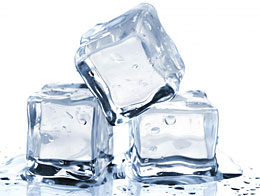- Like
- SHARE
- Digg
- Del
- Tumblr
- VKontakte
- Flattr
- Buffer
- Love This
- Save
- Odnoklassniki
- Meneame
- Blogger
- Amazon
- Yahoo Mail
- Gmail
- AOL
- Newsvine
- HackerNews
- Evernote
- MySpace
- Mail.ru
- Viadeo
- Line
- Comments
- Yummly
- SMS
- Viber
- Telegram
- JOIN
- Skype
- Facebook Messenger
- Kakao
- LiveJournal
- Yammer
- Edgar
- Fintel
- Mix
- Instapaper
- Copy Link
Introduction

One of the handiest items you might incorporate into your post-workout routine is an ice pack. Whether it’s to alleviate muscle soreness, treat a minor fitness injury, or speed up muscle recovery, cold therapy plays an important role in the athletic world, and for good reason.
How Does Cold Therapy Work?
During an intense workout, muscle fibers (or more specifically, the myofibrils that makeup muscle tissue) actually shred, incurring microtrauma that the body then goes about repairing.
The body’s innate immune response is to stimulate a release of chemicals including prostaglandins, bradykinin, and histamine that trigger affected tissues to leak fluid and white blood cells and other nutrients to flood the tissue and initiate the repair process.
Intense physical activity also cues your body to use up its stores of glucose and adenosine triphosphate (ATP) to provide energy to your muscles as you work out.
When those run up, your oxygen-starved muscles produce lactic acid and you see the swelling and inflammation that is often later associated with delayed-onset muscle soreness, or DOMS.
Administering cold therapy after a workout by icing swollen muscles is believed to help reduce this type of pain as well as speed up recovery in a few ways.
- Cold shock constricts blood vessels and cuts off the flow of blood and other fluids to swollen muscles. This reduces inflammation and may help prevent added damage to blood vessels (in the case of an injury like a sprained ankle). Less swelling means less pressure on the tissues and diminished stretching of the skin.
- Application of an ice pack also numbs the affected area, offering an analgesic or pain-relieving effect. Nerve endings may spasm from the excessive stimulation of the muscles with intense physical activity and the cold from an ice pack can slow their conductivity and reduce the number and frequency of pain signals being sent back to the brain.
- Icing a muscle or joint and then removing the cold pack after 10 or 20 minutes leads to rapid contraction (widening) of blood vessels helping to flush out built-up lactic acid and other by-products in the muscles that inhibit repair and cause soreness later.
Types of Cold Therapy
Effective and essentially free, cold therapy (or cryotherapy) is accessible via many methods including:
Ice Pack
Adaptable for varied cold therapy needs like a sore lower back, knee pain, or simply cooling off after a workout, ice packs are possibly the most versatile cold therapy tool. If you don’t have an ice pack handy, consider instead using a bag of frozen vegetables, a sponge or towel you intentionally pre-soaked and froze, or a bag or cloth napkin with ice cubes in it. You can also buy disposable ice packs that are engineered for one-time use and simply involve a chemical reaction (often induced by vigorous shaking) to turn cold.
Whole Body Cryotherapy
In this link, you can learn more about sports cryotherapy and how it is a more extreme but highly effective cold therapy which typically involves spending 2 minutes in a temperature-controlled cryo-chamber where the body is exposed to very cold air (between -110° C and -140° C). While some research has shown positive effects of this type of cold stimulation in facilitating an athlete’s recovery, it is still recommended that athletes approach this solution with input from a sports medicine specialist and trained and licensed cryotherapy administrator.
Cold Water Immersion
As a person interested in fitness, you have likely seen athletes soaking in cold ice baths following an intense game. A 2015 meta-analysis in the journal PLOS One pooled data from 27 different studies and found that cold water immersion affected the symptoms of DOMS significantly. Talk to your doctor before trying this cold therapy method though to avoid injury or lowering your body temperature too far.
Ice Massage
With a large ice cube, rub your sore muscle (or ask someone to do it for you) in circular motions for up to 5 minutes at a time. The cooling sensation coupled with the light massage of the musculoskeletal tissues can help relieve pain and inflammation. Just avoid massaging directly over bony points like the spine.
Frozen Foam Rolling
Foam rolling continues to be a popular trend in post-workout recovery as it kneads tight myofascial tissue and helps to break up scar tissue and boost circulation. Water-resistant foam rollers, however, also feature cold therapy potential, allowing you to freeze them and use for both myofascial release as well as cold stimulation.
Conclusion
Cryotherapy plays an important role outside the fitness world as well, assisting doctors with surgery, helping people treat injuries, even improving symptoms associated with some skin disorders like cysts, warts, and lesions.
